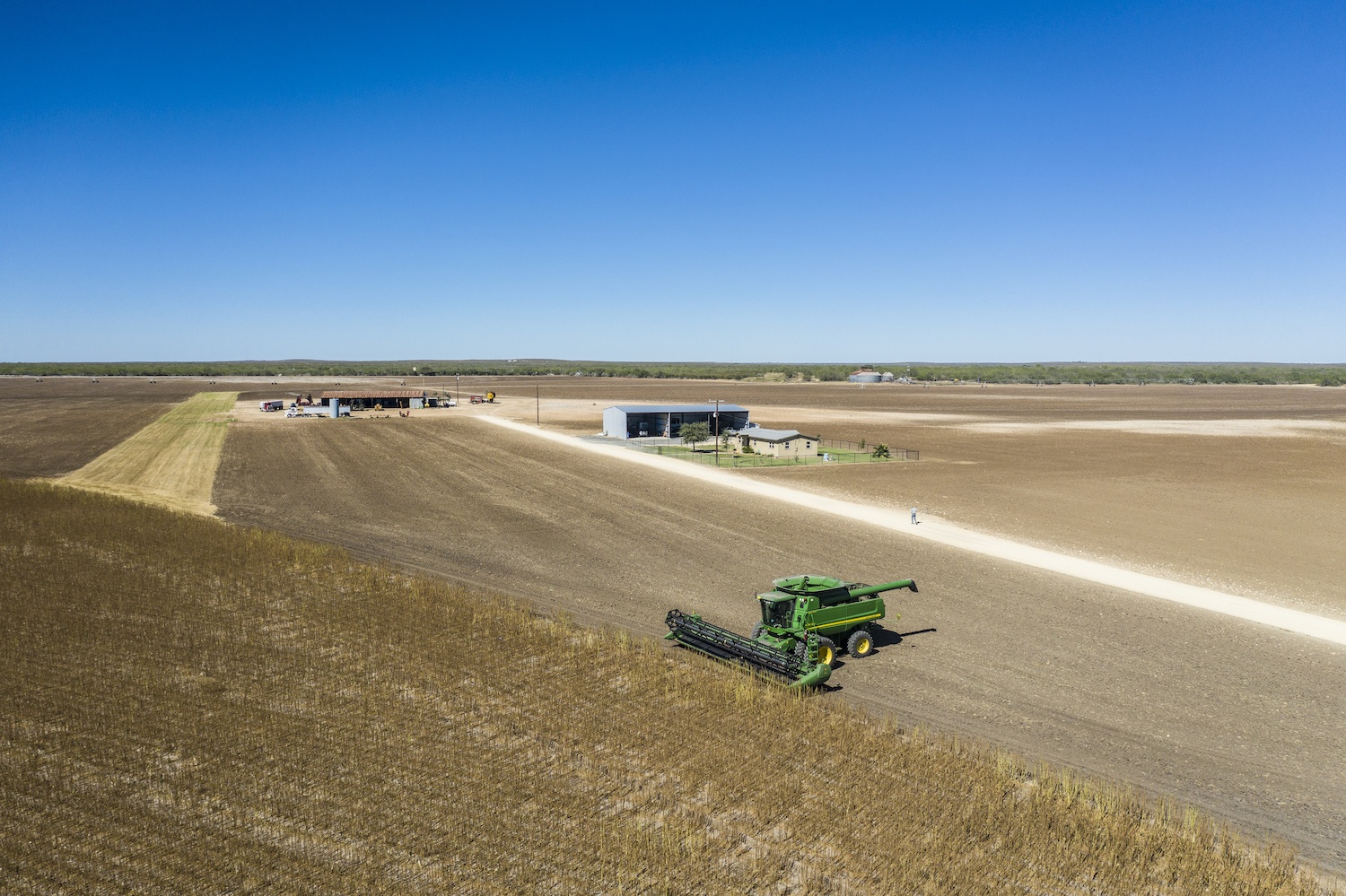
USDA/Lance Cheung
The devil’s in the details.
Last week, the Senate Agriculture Committee unanimously approved a bill that would establish a Department of Agriculture (USDA) program to make it easier for farmers to participate in carbon credit markets.
The Growing Climate Solutions Act is billed as a certification program that helps farmers make money for implementing carbon sequestration techniques. “This bill is going to create a one-stop-shop at USDA to help producers get their foot in the door,” Sen. Debbie Stabenow told reporters last week.
The legislation, an updated version of a similar bill introduced last year, has broad bipartisan support, and Politico reported it may pass on its own before the August recess or latch onto an upcoming infrastructure passage. Influential organizations and companies including the American Farm Bureau, Syngenta, the World Wildlife Fund, and the Nature Conservancy have all signed on in support. Yet in recent days, a few advocates have come out against the legislation. They’ve raised concerns that the bill doesn’t do enough to protect small farmers and that the science of on-farm carbon sequestration is not ready for prime time. More broadly, environmental groups have argued that carbon credits allow polluters to offset their emissions rather than work to reduce their overall environmental impact.
Farmers can implement carbon-sequestering practices and sell credits to polluters like Microsoft and North Face through an intermediary. A small market for carbon credits for working lands already exists.
The Environmental Protection Agency has estimated that the agriculture sector contributes about 10 percent of total U.S. greenhouse gas emissions. These emissions come from methane produced by cow burps, nitrous oxide from fertilizers, livestock manure, and other farming activities. But agriculture can also remove pollution from the atmosphere: Soil may have the potential to sequester large amounts of carbon. (It’s still a matter of debate how much carbon soil can store, and approaches to real-world measurement are still being worked out.)
In recent years, agricultural groups and environmental advocates have coalesced around the notion that farming can be a part of the solution to climate change. That’s where carbon credits come in: Farmers can implement carbon-sequestering practices and sell credits to polluters like Microsoft and North Face through an intermediary. A small market for carbon credits for working lands already exists.
Opposition to the Growing Climate Solutions Act centers around just how much power those third-party intermediaries will have in establishing, quantifying, validating, and reporting carbon offsets. As it’s written, the act allows these technical service providers, companies like Indigo Ag and Nori LLC, to self-certify their carbon offset programs. Critics say that sets up the potential for the worst of both worlds: They’ll operate under the USDA’s sheen of legitimacy, but the agency will have a limited role in research and oversight.
“A farmer could easily get in a trap of signing a contract with Cargill where they have to implement certain production practices so that Cargill could receive credits.”
“We believe that if there is to be a carbon credit created, it needs to be under USDA as a full regulator of that process. Otherwise, USDA will just rubber-stamp a handful of monopolies that will control carbon credits and the specific practices that a farmer has to implement,” said Joe Maxwell, President and CEO of Family Farm Action, adding that some of the technologies that may be approved, like anaerobic digesters, may not pass muster under a more stringent review process. Worse, without full emissions transparency all along the supply chain, “big polluters could wind up getting credits but never have to clean up their own acts.”
[Subscribe to our 2x-weekly newsletter and never miss a story.]
Maxwell also raised concerns that income from carbon credits in the meat sector would flow to integrators like the meat processing multinational JBS while the cost of implementing new technology would fall to contract farmers. A similar dynamic could play out among row crop farmers.
“A farmer could easily get in a trap of signing a contract with Cargill where they have to implement certain production practices so that Cargill could receive credits,” Maxwell said. Then, if the production practice proves too costly, it may be difficult to exit those relationships. “It would just advance similar abusive behavior,” he said. The legislation does include provisions designed to protect farmers from such relationships, but Maxwell said the language is too vague.
“Not only do these carbon markets fail to reduce emissions overall, they serve to exacerbate pollution hot-spots in low-wealth communities of color.”
Carbon credits alone will probably never cut the agriculture sector’s emissions to zero, especially if they don’t come with a requirement that polluters disclose their own emissions before making money on the credit market. Environmental groups have argued that strengthening credit markets will undermine overall efforts to cut emissions while providing polluters cover to maintain the status quo. “Not only do these carbon markets fail to reduce emissions overall, they serve to exacerbate pollution hot-spots in low-wealth communities of color,” said Shakara Tyler of the Black Dirt Farm Collective in an October press release after the bill was first introduced.
Maxwell acknowledges this. Nevertheless, he sees carbon markets as an important part of the overall equation. “It was not an easy decision to come out against this bill because we do support carbon credits, done correctly and truly validated,” Maxwell said. But, he added, the Growing Climate Solutions Act is only a half-solution as currently written—one that takes the important step of creating USDA-approved carbon markets, but fails to ensure they’ll be fair or accurate.








